Tulum Is a ‘Mental Hospital With a View of the Sea’—But Is It Really as Bad as People Say?
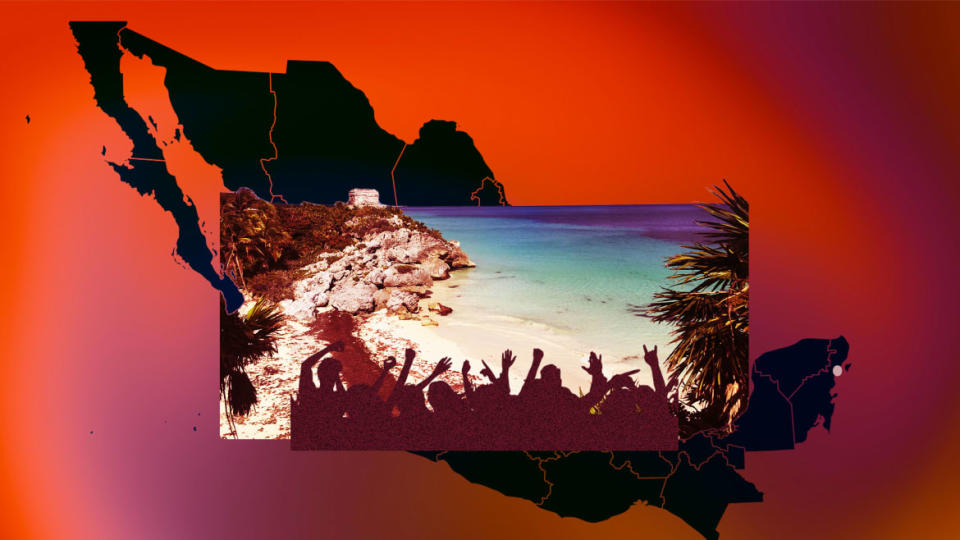
I made it only a few steps out of an exorbitant taxi ride when the first person emerged from the shadows to offer me any kind of drug I could possibly want. At least half a dozen similar dudes would follow. Paradise, if you’re a 20-year-old here to “party.” Obnoxious, if you’re a grumpy middle-aged dude in the manicured jungle of Mia Tulum trying to figure out how to have fun at an electronic music set from the surging band Anden without obtaining too miserable a hangover.
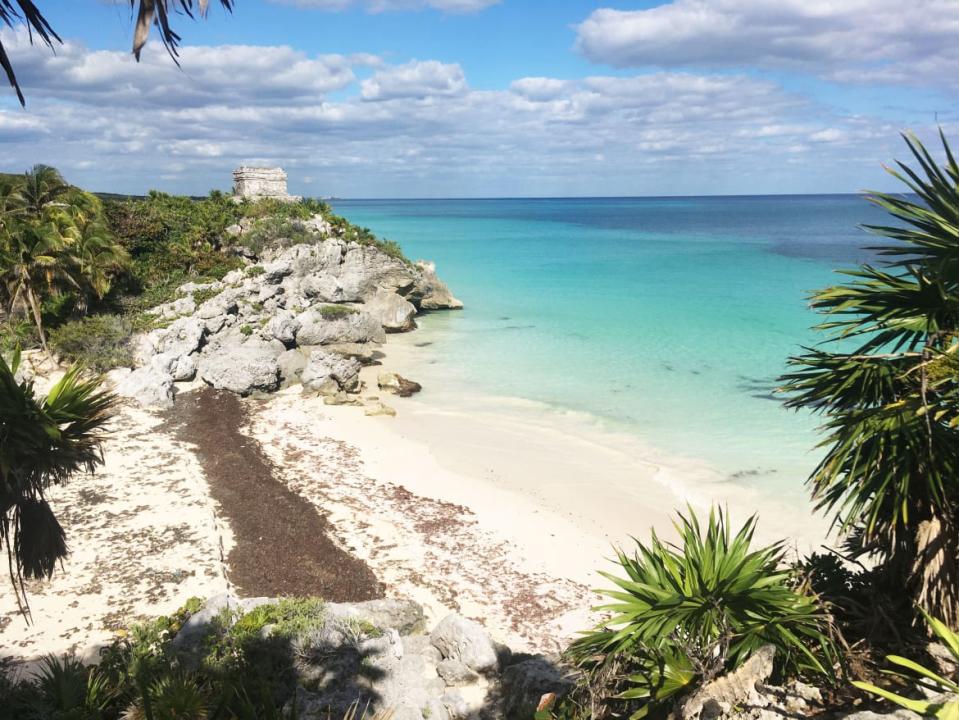
The Tulum Archaeological Zone in Mexico.
I expected the whole of a six-day trip to Tulum to feel like this. For the town that was once little more than a chicken shack and a gas station near an impressive set of ruins to be utterly destroyed, after a glut of Burning Man-style revelers inspired an unhinged construction boom that has choked out the road that runs along the white sand beach and driven the prices of everything from a hotel room to a quinoa bowl to L.A.-levels. I expected to see nothing but disillusioned, drug-addled, sunburnt tourists wandering bleary-eyed from one overpriced, over-decorated over-tourism scene to the next. I expected to find what I keep hearing, that everyone hates Tulum. That like San Francisco, Paris, Venice, and Barcelona, Tulum is “over” and the only people who still go there are basic b*tches who’ve failed to receive the memo; that it’s Oaxaca and Todos Santos now, not Tulum.
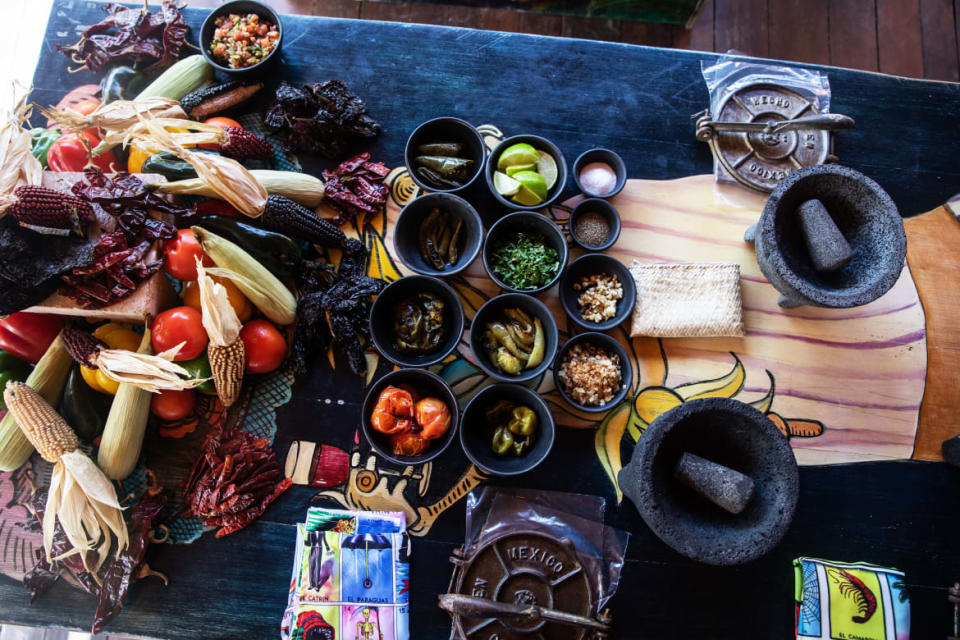
Instead, I found quiet beaches, hotels oozing with contiguous but not monotonous jungle style, a tortilla and salsa making class hosted by Top Chef royalty, refreshing cenotes, world-class massages, chic merchants who’ve invented entirely new and fun ways to sell things, handmade crafts, and plenty of people who don’t, in fact, hate Tulum.
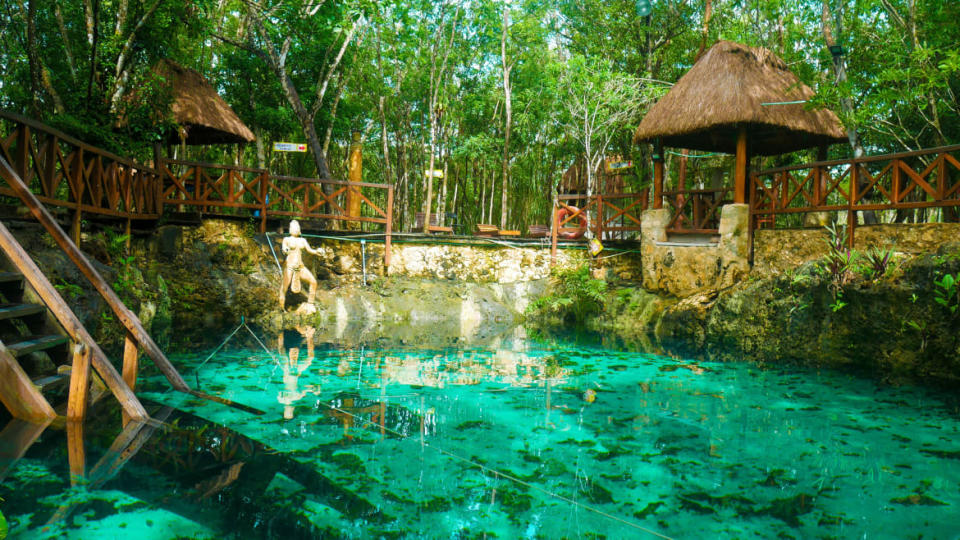
Cenote Zacil-Ha in Tulum, Quintana Roo, Mexico
“I hate the $15 smoothie bowls,” says Corinne Tobias, who came for a month and decided after two weeks to enroll her daughter in school and spend six months of the year in Tulum. “But I love the healers, Alice’s school and the access to so many people from all over the world. I hate telling people this is where we’re staying for the school year. I just say Mexico and hope they don’t ask.”
Tobias is new to town but joins a legion of Tulum lovers who have mixed feelings about this once-wild swath of oceanfront jungle. Olmo Torres moved to Tulum in 1998, after an epiphany in a SCUBA dive of a 180-foot deep shaft cenote. Torres had spent weeks training for such underwater excursions in his native Mexico City, but the Angelita blew him away. “It was probably formed during the last ice age,” Torres says. “There’s a 100 feet of freshwater layer, then a transition to marine water, clouds of a white haze, it’s super trippy. How in this world did this happen? That’s when I wanted to understand everything about this place.”
Torres got so lost in the underworld he ran out of air and had to ascend with the aid of a friend’s oxygen tank. When he got to the surface, he swapped tanks and jumped right back in the water again. By the day’s end, he’d found his calling: “This is what I want to do with my life,” he said. “I want to study cenotes.”
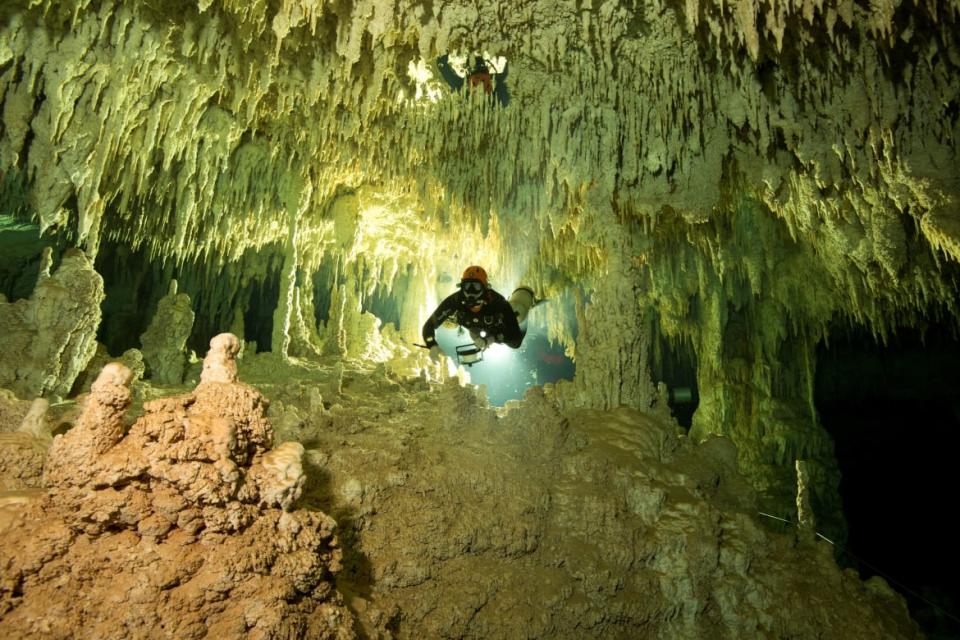
A scuba diver measures the length of Sac Aktun underwater cave system as part of the Gran Acuifero Maya Project near Tulum, in Quintana Roo state, Mexico.
Cenotes are a vital component of what sets Tulum apart from the dozens of beach towns that line Mexico’s ample shoreline. The city’s rampant, reckless development puts these freshwater oases directly at risk. Because Tulum was developed without a planned wastewater treatment network, it’s largely up to individual property owners to “do the right thing,” which even at hotels boasting that they’ve installed state-of-the-art septic systems is a joke. The best of those systems were designed for a max of 5-10 users, not the dozens of people who populate the lodging lining the beach, and as a result there’s human excrement seeping out of those systems and directly into underground aquifers, which not only pollutes formerly crystal-clear cenotes but the ocean itself, once that cloudy water works its way out to the sea. “This is changing the water quality of cenotes,” Torres says. “The worst case, Calavera, if you swim in it you risk ear and eye infection. If you take a sip of it you might have diarrhea.”
So it’s not just that Tulum is full of annoying tourists; it’s full of shit. And thanks to widespread corruption in part from the sale of drugs to raving tourists, the only hope that things might get better here is steeped in cynicism: if the ocean gets polluted enough, the prices and the crowds drive enough people to more smartly managed places, Tulum’s unchecked growth hits a wall it desperately needs to hit, and those who’ve been raking in profits while the cenotes suffer will realize that they have to clean up the city’s act—fast.
“In one way or another, the world is showing us we need to do things in a better way,” says Torres, who despite Tulum’s problems still loves it. “It’s still a small town. Five minutes in a car and I can get across town. I can bike. The water is still really blue.”
Even those who rely on tourism dollars lament the way the town has changed. Brendan Leach is CEO of Colibri Hotels, which has three stunning waterfront properties in Tulum: La Zebra, Mi Amor and Mezzanine. Leach first came to the area in 1996 as a backpacker and slept on the beach, when it was a “truck stop, a chicken shop and a taco stand,” he says. He got a job at Zamas, one of the first nice hotels to break ground on the beachfront, and spent the next 25 years watching everything change. Be Tulum and Amansala showed up next, with marketing campaigns that drew celebrities like Jude Law, Sienna Miller, and Demi Moore to discover the place, in the early aughts. Then came the Burning Man crowd, the bohemians now referred derisively to as “Tuluminati,” and the beige vibe of Tulum became a brand ripe for the Instagram era. “Even in 2006 Tulum was all about using local products and resources to decorate your hotel,” says Leach, partly because furniture stores were hours away. “You had things made, largely out of necessity but also not to corrupt the jungle vibe.”
As Playa del Carmen to the north and Cancun to the north of that became overdeveloped, people have migrated steadily to Tulum, Leach says. “There are very few places that have the cocktail of things this area offers: the Caribbean, beautiful white sand beaches, the jungle right there, the cenote system, floating through the wetlands, and an ancient Mayan city.”

A general view shows part of the archeological Mayan ruins in Tulum, Mexico.
Rachel Appel is an American who’d visited Quintana Roo as a child, starting in Cancun then checking out areas farther south, until eventually she discovered Tulum, which in 2010 was “a beach town with cute restaurants, really quiet,” she says. “I fell in love with the place.” She moved back and got a seasonal job with a tour guide company, then a concierge gig at a hotel in 2015 and a plan to relocate permanently. But even in that five year span, much had changed. “Every time I would go back, it was just worse and worse. Everyone was there because of how beautiful the place was, but it didn’t seem like it was being taken care of very well,” Appel said. “I wanted to move back and start a recycling program, but I realized it wasn’t the answer to all of these problems it was facing.”
Instead, Appel decided to go to journalism school in London, and she did her final project on Tulum’s challenges, a radio project that she later spun into a short film: The Dark Side of Tulum. The documentary racked up more than 1 million views on YouTube, and it brought new awareness to problems most of the town’s visitors “just party on top of, with no regard to the consequences,” Appel says. “Now it’s like Miami 2.0. Now when I go there, I don’t feel like I’m in Mexico.”
Still, Appel returns regularly, staying with a friend who lives far from the beach and the techno, in a house with a rain catchment system and a modern septic tank, eager to stay connected with people who want Tulum to change for the better.
Among those people is Pablo Doma, a Spaniard who first visited Tulum in 1996, when there were only two hotels and no real road. He’d moved to Mexico City and returned to Tulum often, eventually selling everything he owned and investing in two small plots of land in the Yucatan in 2010, upon which he built five “eco-houses” with adequate septic systems, woven into the jungle. Since, Doma has seen a “new breed of investor” show up, the money-obsessed kind, with only one goal: milking drug-addled tourists for all they’re worth.
“They’re spending $700 to stay at a nice hotel, have a cleanse, party for a couple days, have dinner, then a DJ, then an ayahuasca ceremony, then a cacao ceremony. You mix these things with drugs and think you’re gonna heal yourself?” Doma says. “You’re gonna confuse yourself, sorry. Mix the politicians, the construction, the greed and the fake spirituality, this is the result. This is a mental hospital with a view of the sea.”
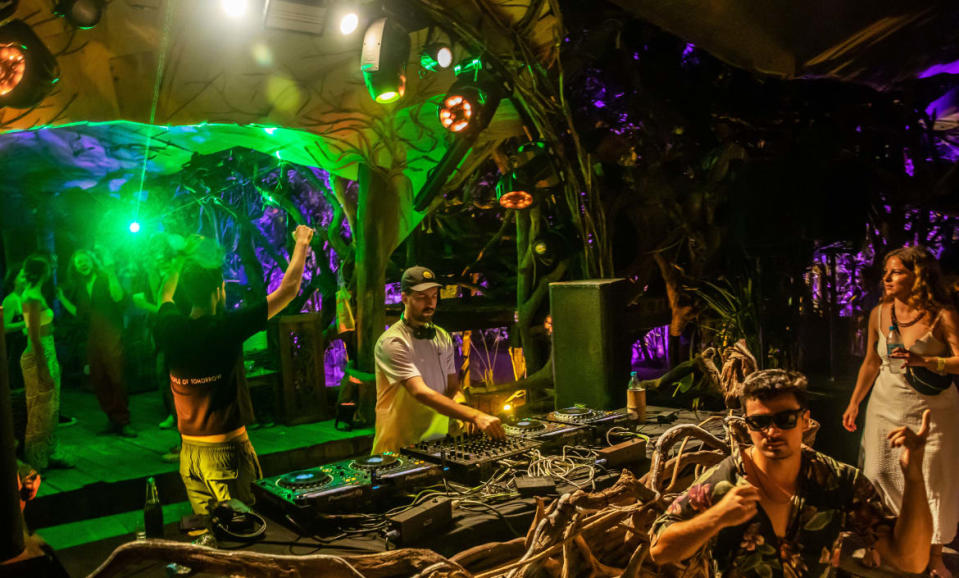
DJ set and party in Tulum, Mexico.
Still, Doma is happy in Tulum, he says. “I’m having a coffee on the street, I never wear a mask, they never ask me for one of those vaccine passports,” he says. “I haven’t been on the beach road in a year.”
Freedom is a big draw for those who relocate to Tulum, says Cristobal Diaz, who moved in 2015 with “a broken heart and a piece of land,” he says. “This is pirate country,” he says. “If you’re an Italian with a bad background you can come here and put in a pizza oven and have a nice life.”
The development boom, “fast fashion for hotels,” is unfortunate and inevitable, he says. “The market eats everything.” But what Diaz liked about Tulum he still likes: mingling with interesting people from all over the world, swimming in cenotes, basking in a sun that never gets too intense. “It’s still Mexican Disneyland, but with this little touch of authenticity, a relaxed ambience, beautiful women and men dancing on the beach,” he says.
Grieving after the death of his grandparents in Washington, D.C., Diaz’ pal Wesley A’Harrah moved to Tulum in 2020 after a winter trip with some friends. “It was the middle of COVID and I’m swimming in the Caribbean and doing acid on the beach,” A’Harrah says. “People come here to smoke DMT and fuck. Some people use that for creepy ends, some use it for holistic healing and beautiful purposes.” A’Harrah bought a place in the jungle where a slide emerges from his bedroom and into a mini-cenote in the front yard. He started a multidisciplinary art lab there, called Caracol, inviting artists from different mediums to mix and collaborate. “There’s a very creative community here,” A’Harrah says.
Leach, CEO of Calibri Hotels, is “not loving the current stage” of Tulum, he says, but he’s hopeful that prices will come back down and things might get better. “I think we’re at a turning point,” Leach says, “where the insane pricing is going to come back down again.”
A’Harrah welcomes the idea that Tulum is losing its cool in favor of buzzier spots like Costa Rica. “It seemed like the end of 2021 and the middle of 2022 saw peak volume here,” he says. “This high season was very quiet, maybe half or a third of the people we saw last winter. It’s good to hear people saying ‘Tulum is canceled.’ It’s still easy to have your own world here.”
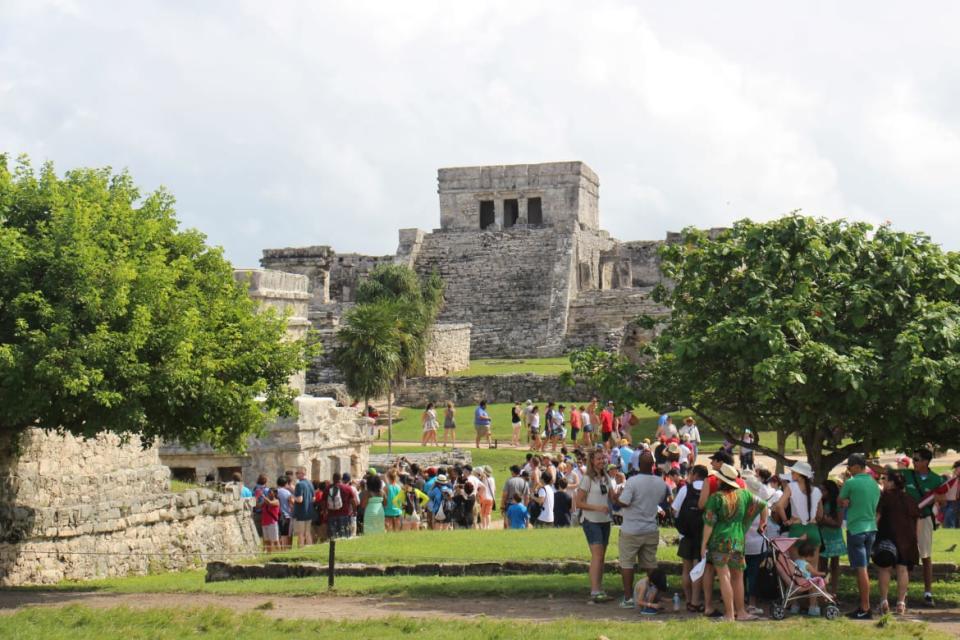
The Maya ruins of Tulum, Mexico with crowds of tourists.
It’s also easy to escape the madness, even on the beach. Mi Amor is a tranquil hotel at the northern end of the beach road, and while La Zebra lies on a busier stretch, its oceanfront cabanas offer quiet hideaways from throngs of tourists elsewhere. Even more placid is La Valise Tulum, where a small collection of cabins built on the white sand lead to a gorgeous open-air dining room and then to cabanas and beach chairs on a chill beach, on the southern end of the hotel zone. In town, the Marriott’s ALOFT Tulum has a sleek rooftop pool and an easy walk to the heart of the city. At none of these places did any DJ sets keep me up at night or drug dealers pester me. So maybe Tulum isn’t quite ruined, just yet.
Get the Daily Beast's biggest scoops and scandals delivered right to your inbox. Sign up now.
Stay informed and gain unlimited access to the Daily Beast's unmatched reporting. Subscribe now.

 Yahoo Autos
Yahoo Autos 